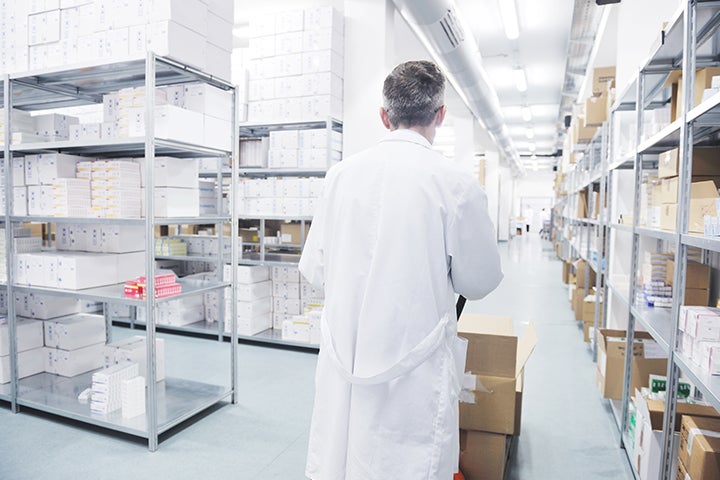As healthcare systems seek ways to provide safe, sustainable care under strict financial constraints, attention is turning to supply chain management, where there is potential for significant efficiency gains while improving care delivery.
The health sector has lagged behind many other sectors, such as retail and automotive, in embracing the benefits of modernising supply chains. However, there is a growing understanding that efficient supply networks can generate significant savings that can be reinvested in patient care.
Analysts estimate that if healthcare adopted standard improvements in the supply chain, seen in other industries, total costs could fall by almost £100 billion globally. In the UK,a review of NHS procurement by Lord Carter found that savings of around £1 billion a year could be achieved.

Dr Lauritano
Three years ago, Dr Diego Lauritano, supply chain director at one of the biggest public hospitals in Italy, led an initiative to address these challenges. “One of the biggest issues was the availability of the products we needed, and making sure they reached the right people,” he said. “We had poor information from our supply chain, which impaired our understanding of the most efficient and safe use of products in the hospital.
“Getting to grips with these issues was taking up too much time, which would be better spent on patient care.”
His determination to find a solution introduced him to Johnson & Johnson Medical Devices (JJMD), which has been working with hospitals to improve supply chain issues. In partnership, they established a multi-disciplinary team, which included clinicians, pharmacists, and IT and supply chain experts, to implement a new system, named Resolution, within the hospital.
“We’ve seen great time savings, both in the logistics department and within the wards,” said Dr Lauritano. “This means that our staff spend less time on admin and more time caring for patients.
“It also helps our staff development. Our engineers have gained new skills by having the opportunity to work with the radio-frequency identification technology. Our staff are very enthusiastic about this project, because they can see real benefits.”
Early results from this collaborative approach at Policlinico Sant’Orsola-Malpighi, Bologna University Hospital have been outstanding with a 76.8 per cent time reduction in the logistics department for receiving the products while the accuracy of tracking information has improved. In the ward, the clinical staff spends 86.9 per cent less time on logistical and admin tasks, meaning staff can spend more time caring for patients.
Supply chain systems and technology in healthcare are generally less well-developed than those typically found in other industries due to a historic lack of focus. In the healthcare industry, 45 per cent of non-labour operating budget is driven by the supply chain, and up to 15 per cent of a provider’s supply chain resources may be wasted due to ineffective processes for analysing, planning, and placing orders. Healthcare providers often use manual ordering processes, which are often time-consuming and prone to errors, leading to higher costs, potential safety issues or cancelled procedures because the right supplies are not available.
The need for change has become more urgent because of the dynamics of the healthcare industry. Manufacturers are increasing the range of products they supply, and quality and compliance issues are rising because products are more complex and regulatory scrutiny is stricter. Consequently, hospitals and clinics increasingly are considering new approaches to supply chain challenges, including partnerships with other healthcare providers, manufacturers and distributors.

In 2017 JJMD, which is working with Dr Lauritano’s team, launched CareAdvantage to harness the clinical, consumer and operational capabilities of Johnson & Johnson companies across a wide range of services, from financing solutions to patient pathways. Supply chain is part of this range of services, with CareAdvantage helping healthcare providers streamline resources, workflows, and processes, improving quality while saving both time and costs–helping hospitals do more with less.
Tobias Stock, value chain solutions lead, JJMD EMEA, said: “Our partnership at Policlinico Sant’Orsola-Malpighi demonstrates that solving starts with listening, and that we understand that our customers need support tailored to their specific set of circumstances. This is exactly what CareAdvantage provides. Understanding also the clinical aspects of supply chain, we are helping the hospital to get a clear visibility of all products – and the related costs – linked to a specific procedure. This helps our clients to drive future strategic decisions based on real data.”
Georgia Long, director, value creation, JJMD EMEA, continued: “We work closely with our hospital partners to compile an in-depth assessment based on market as well as performance data and insights. Once we’ve uncovered specific needs and challenges, we can then co-create measurable tailor made programmes, drawing on the depth of knowledge and capabilities that exists within the Johnson & Johnson healthcare network, that will help hospitals get the results they’re looking for.”
The benefit of this hospital-industry approach within supply chain has clearly been demonstrated in Bologna, as Dr Diego Lauritano concluded: “I hope other hospitals will take the same path that we did because it’s been working well for us and this could help raise awareness on supply chain technologies in healthcare.”
To learn more about how healthcare systems can deliver improved care through better supply chain management,
contact emeacareadvantage@its.jnj.com 



